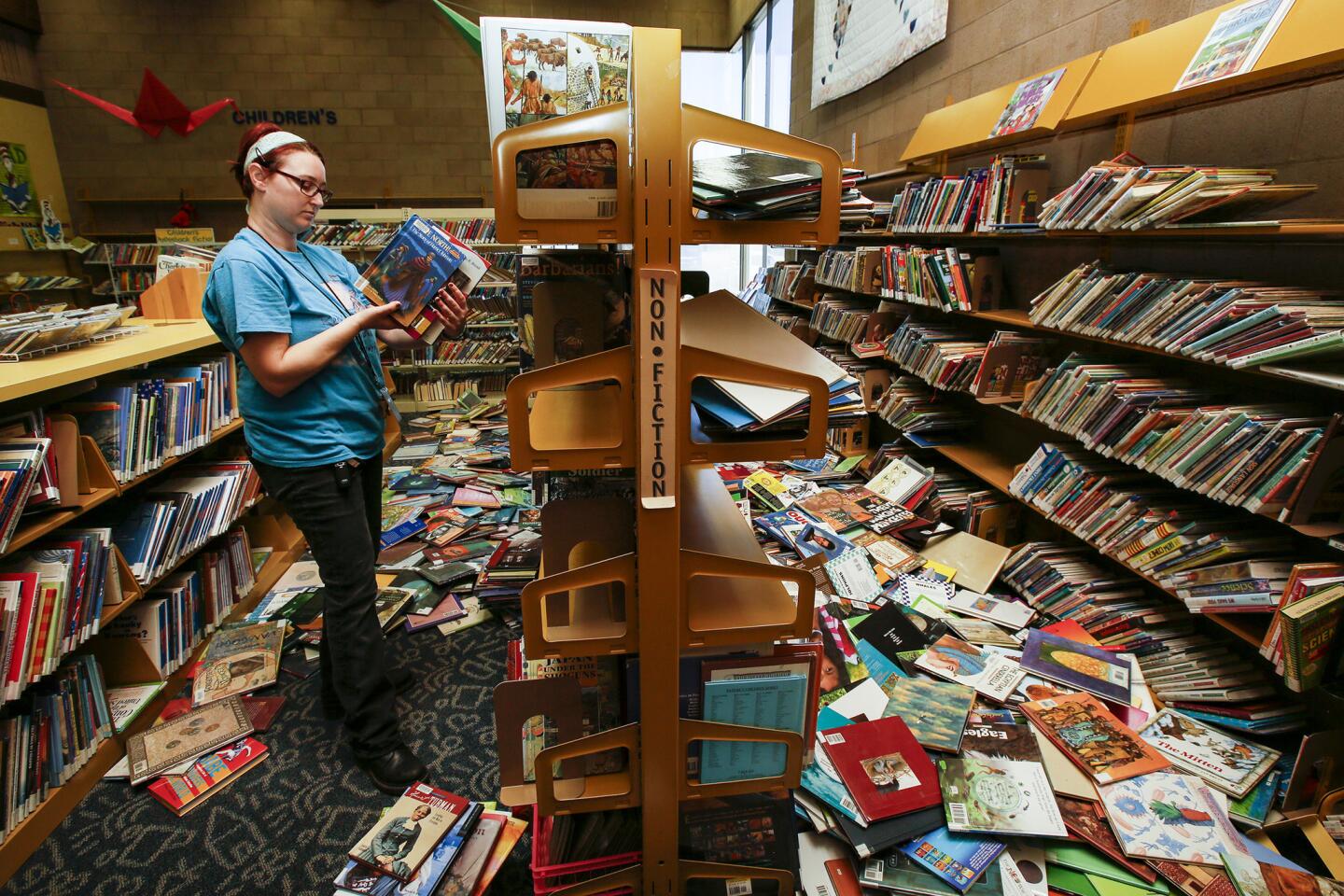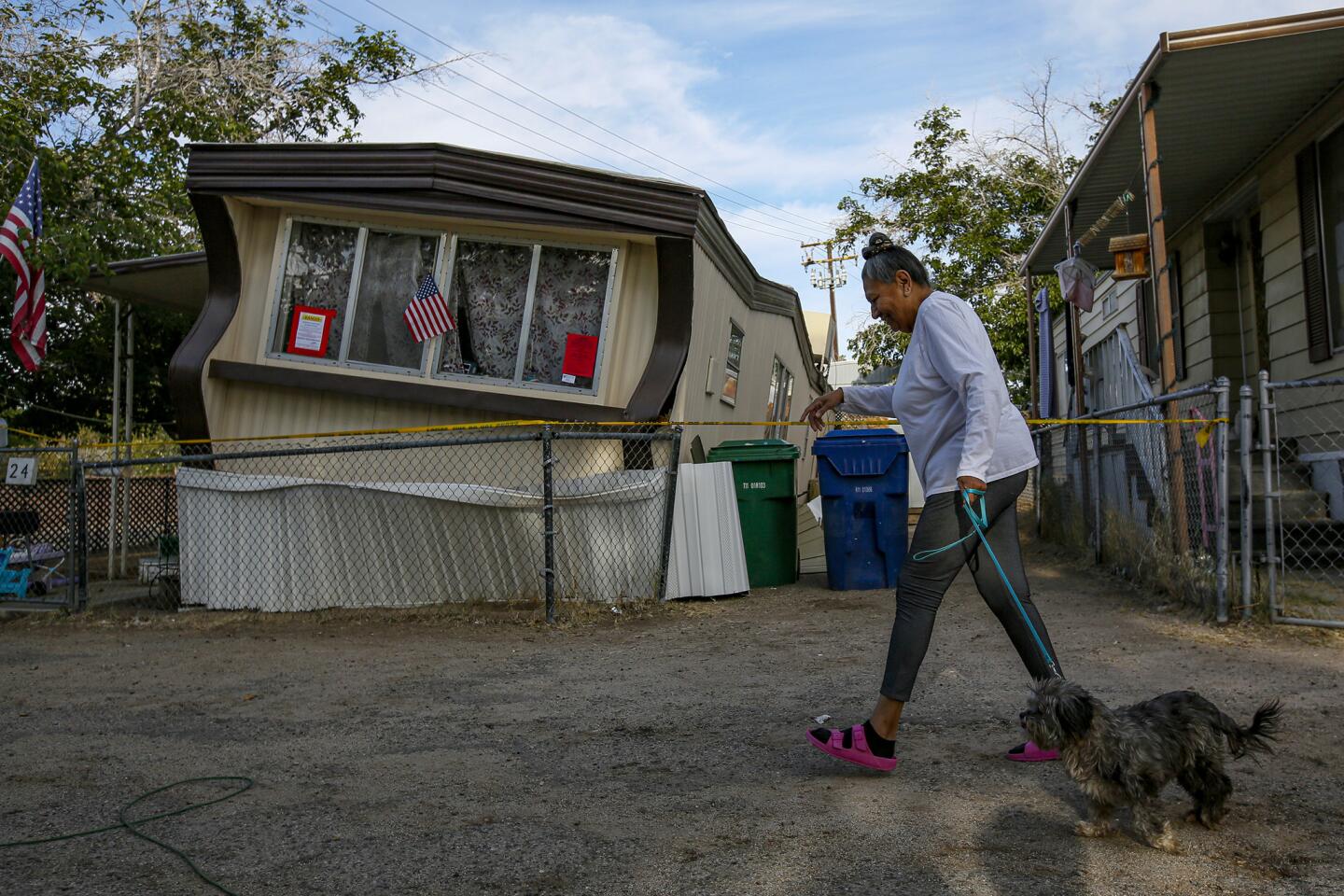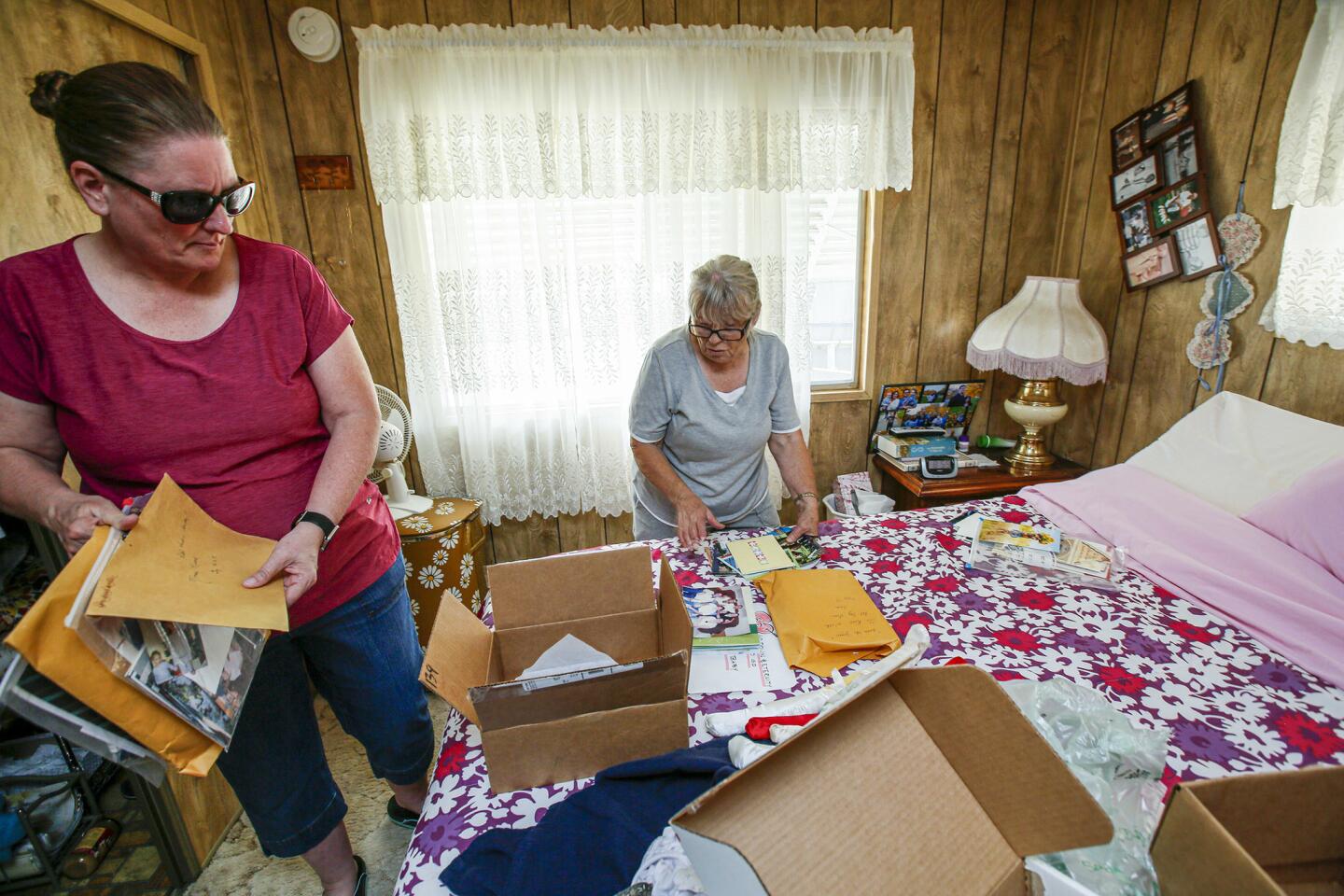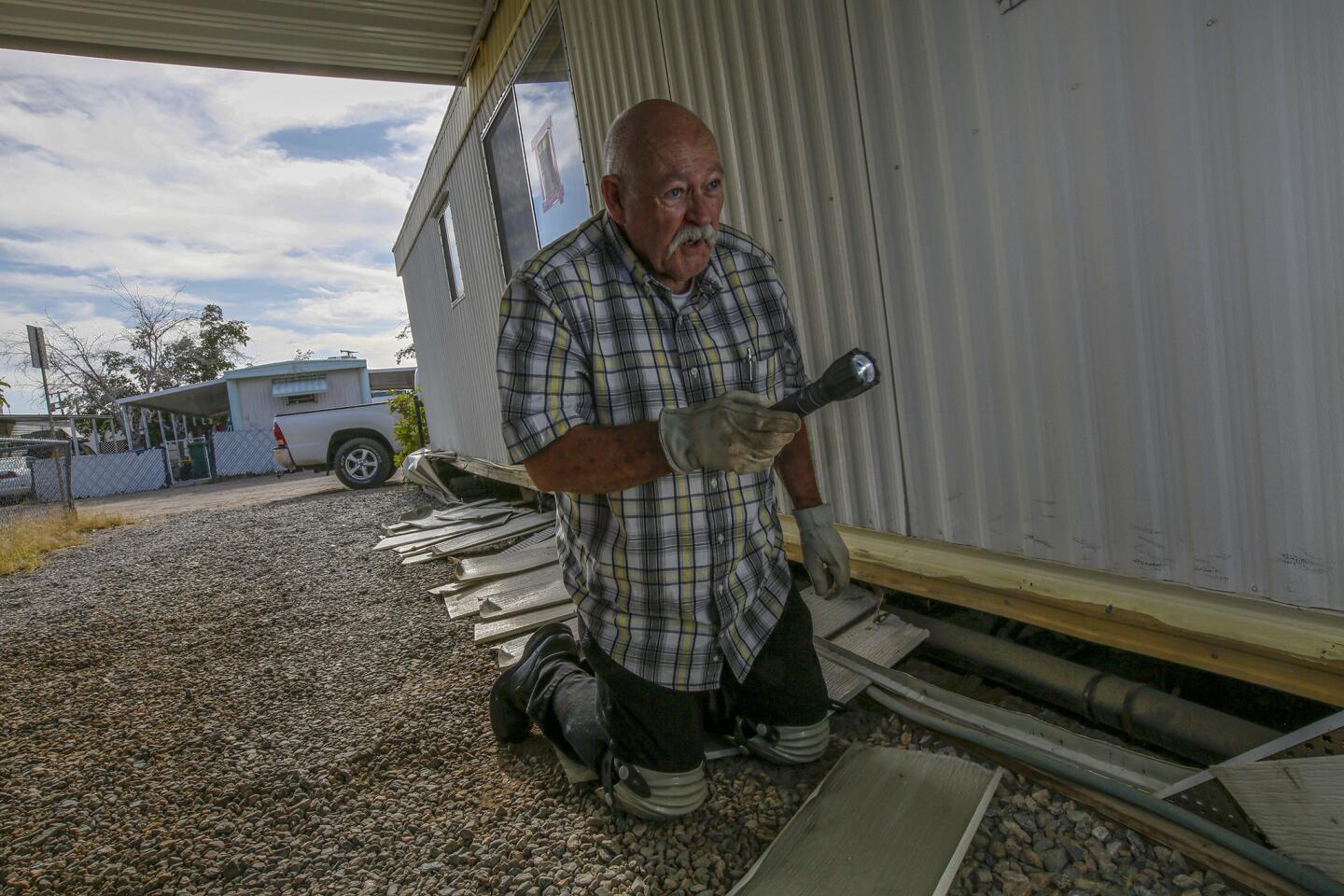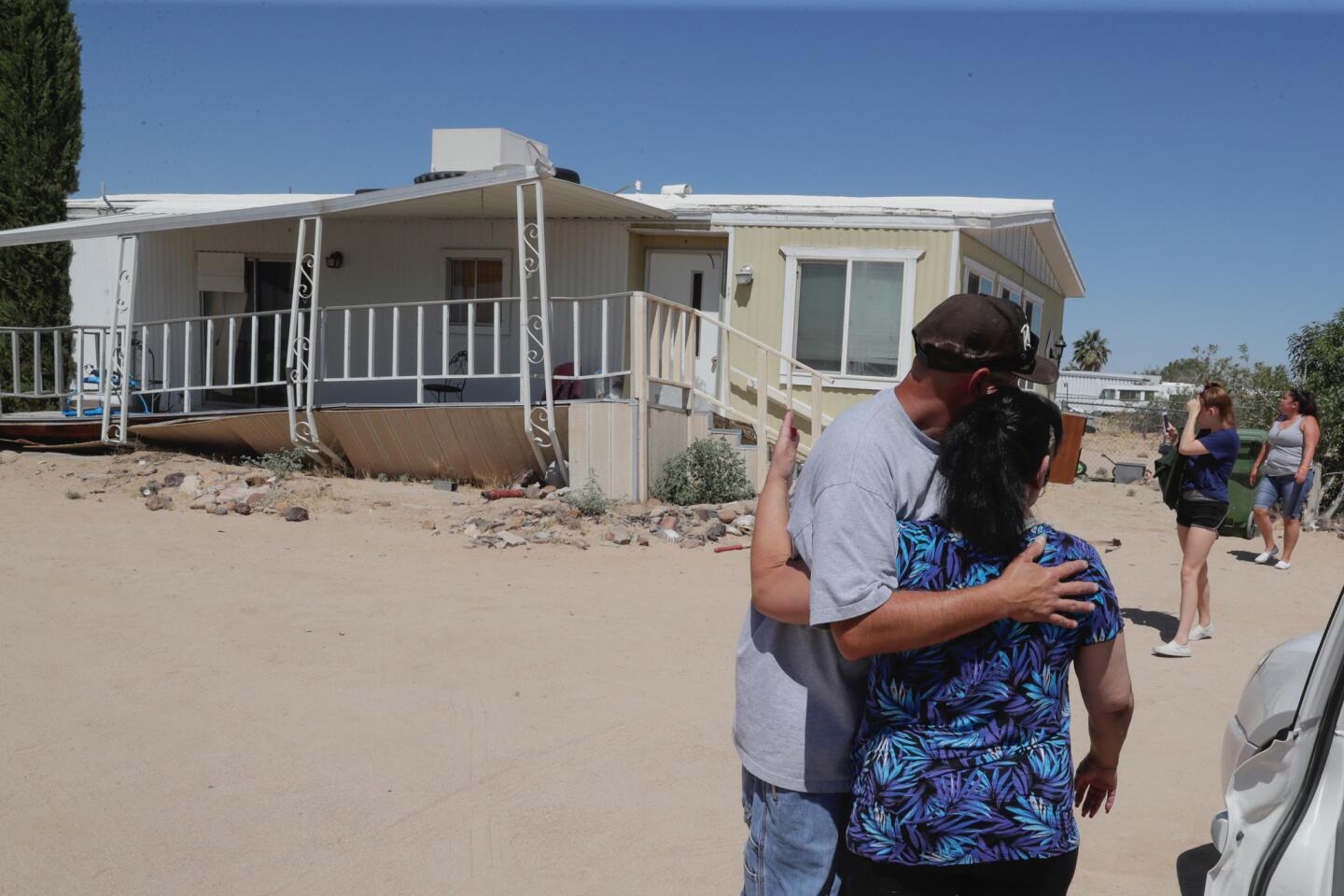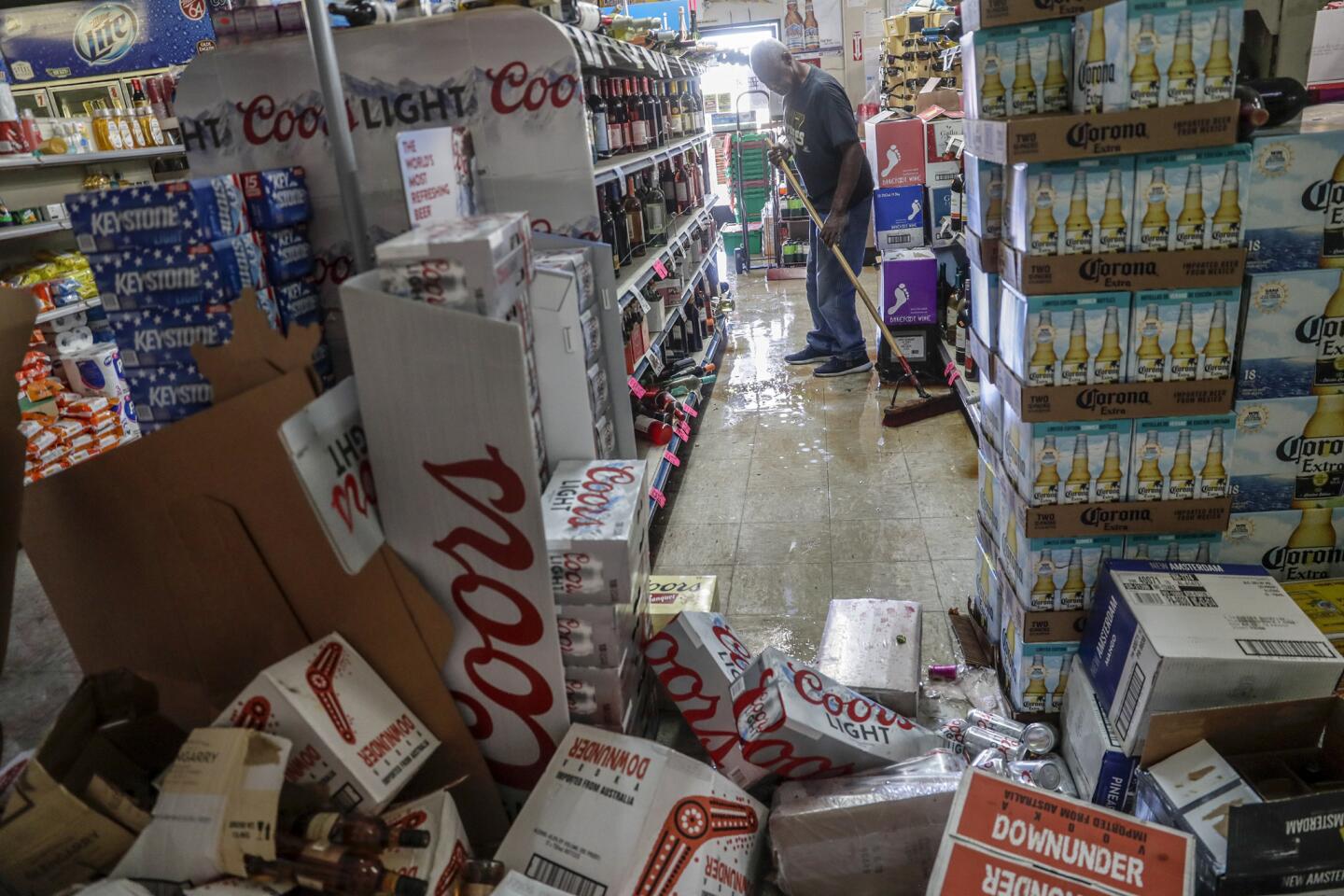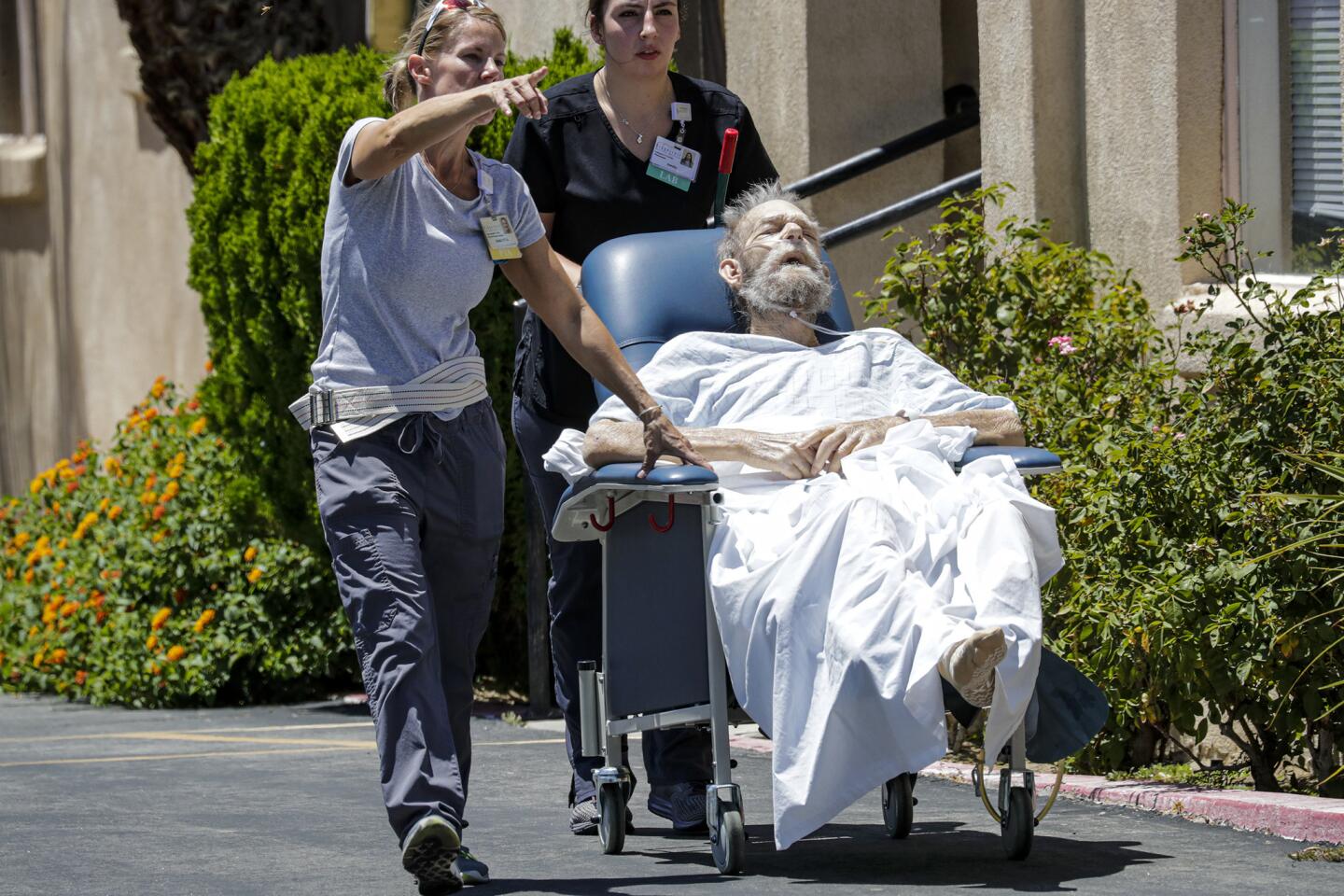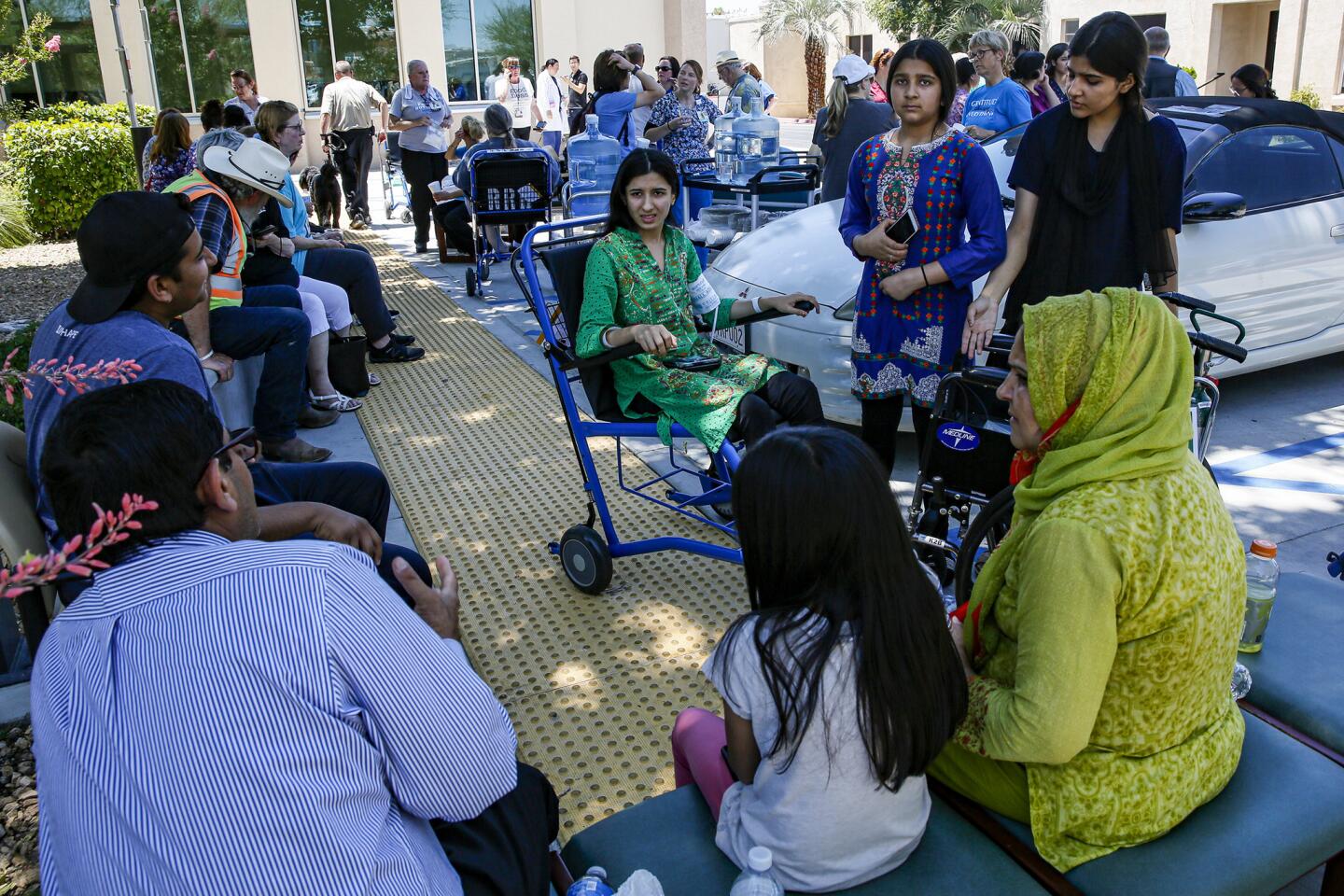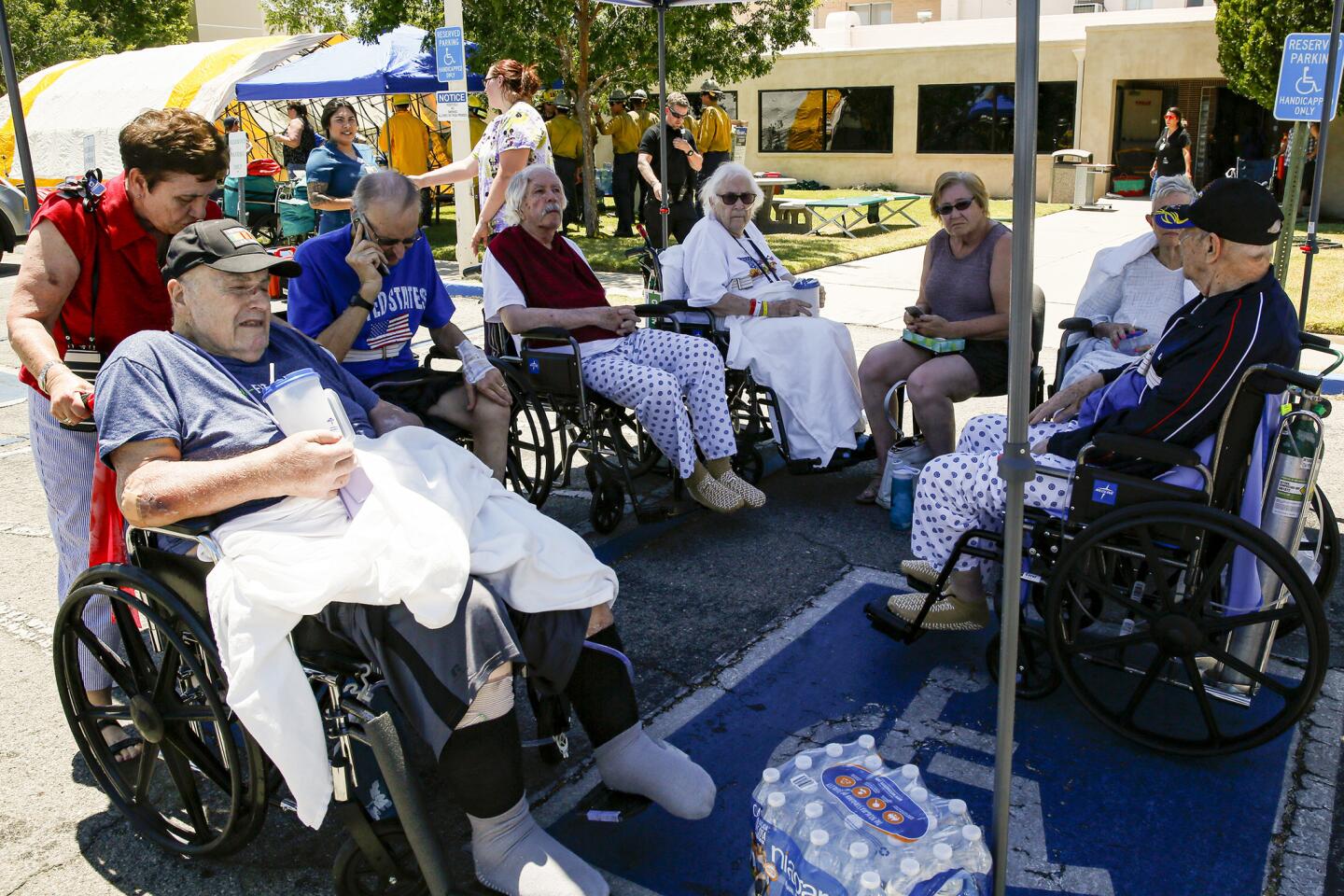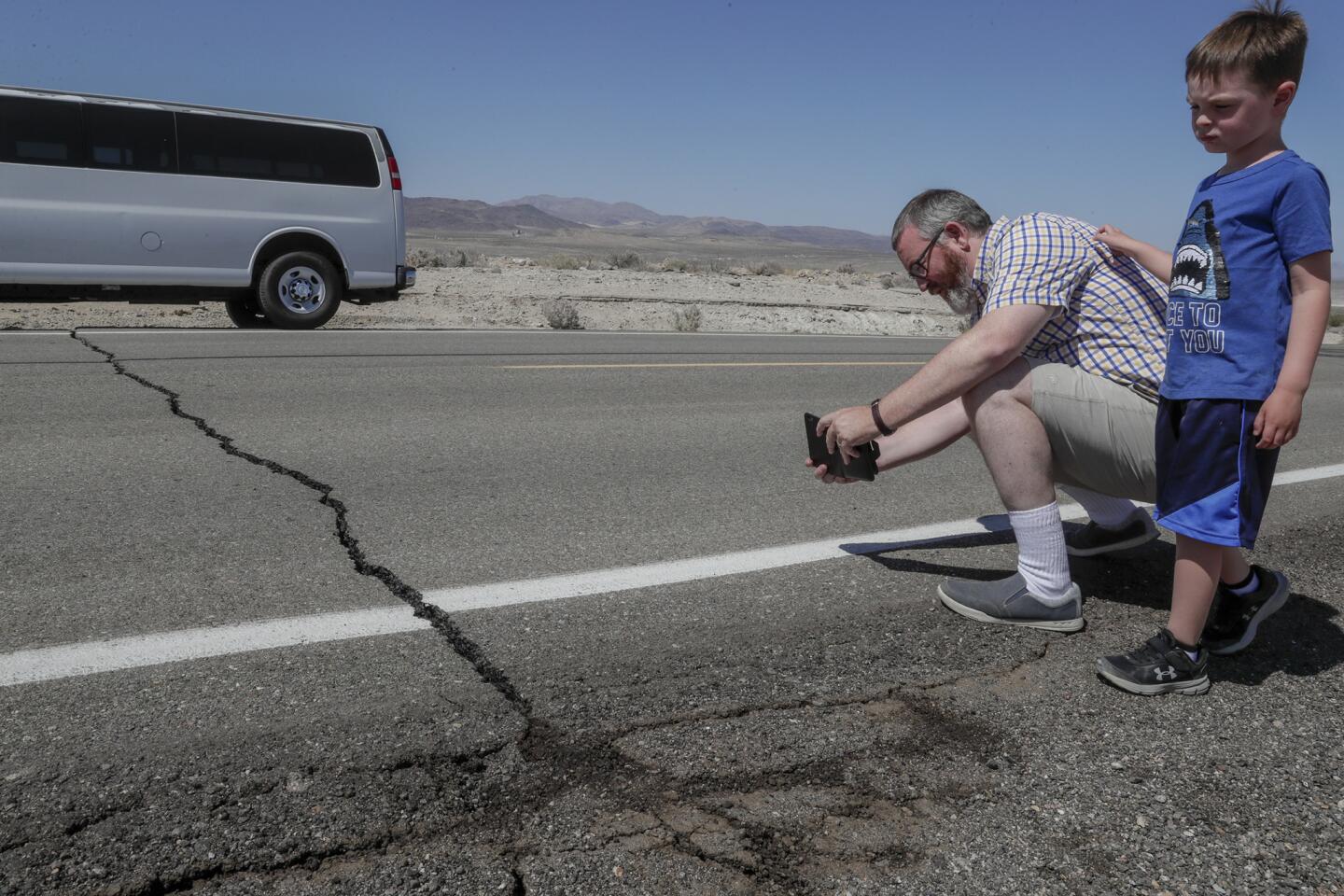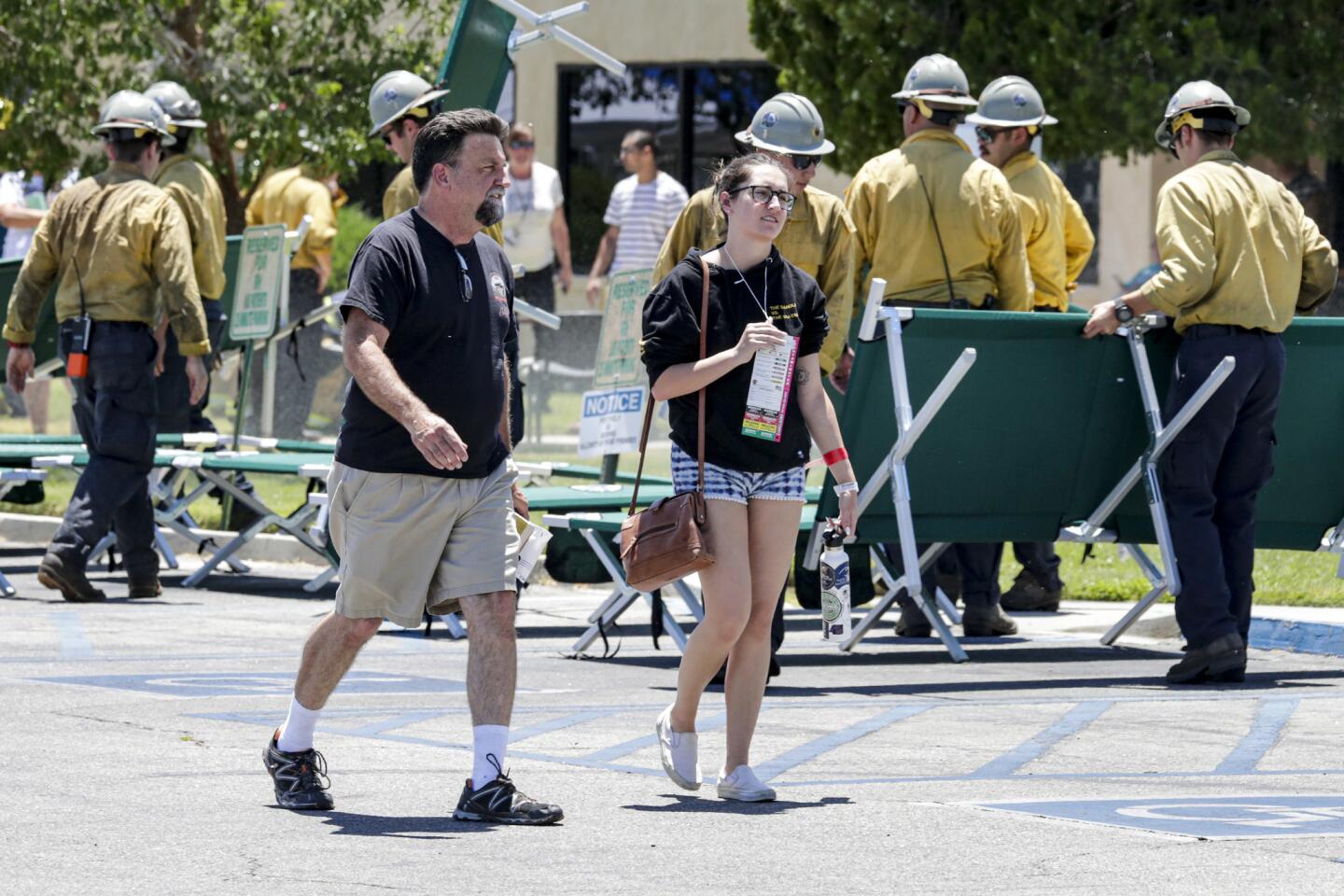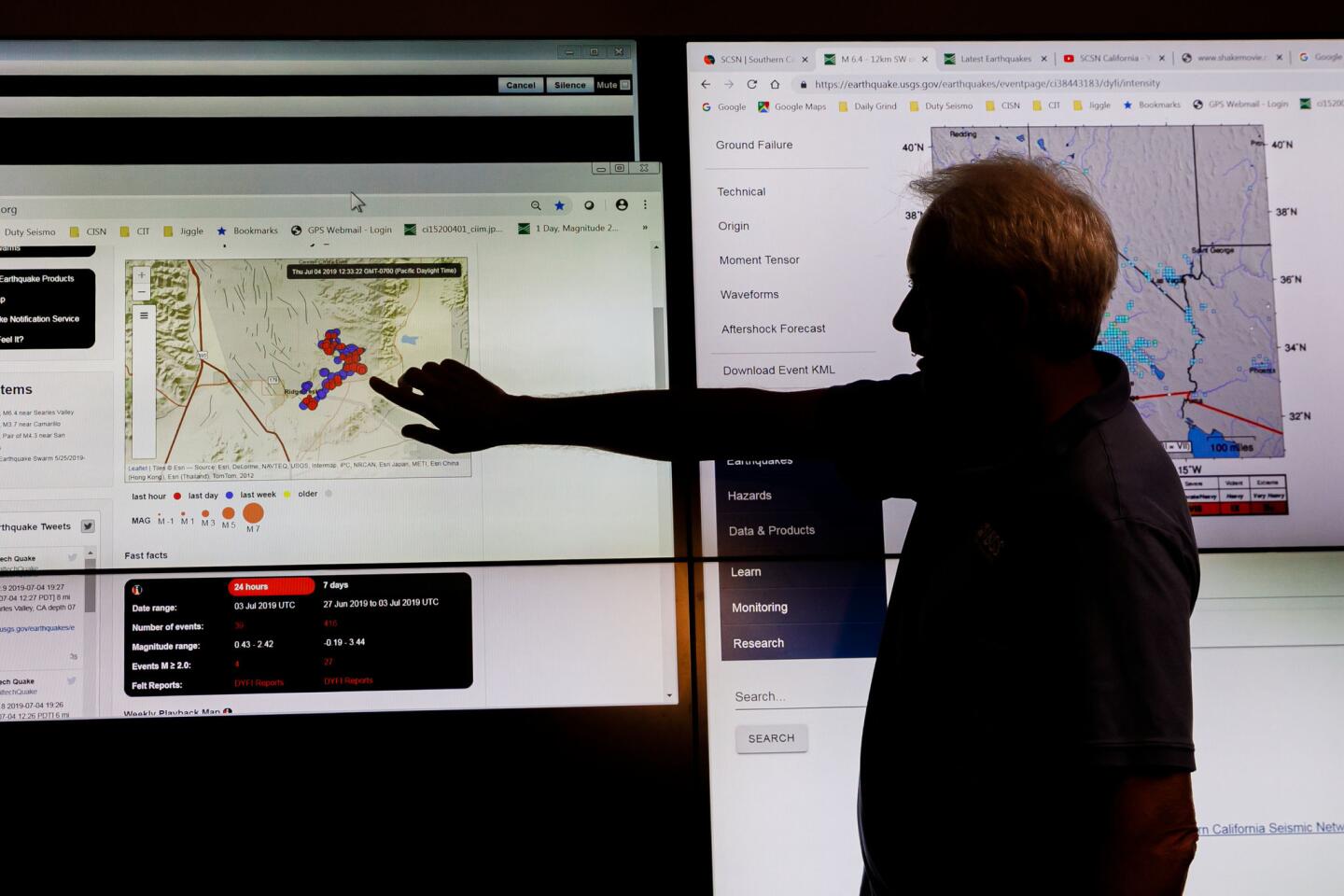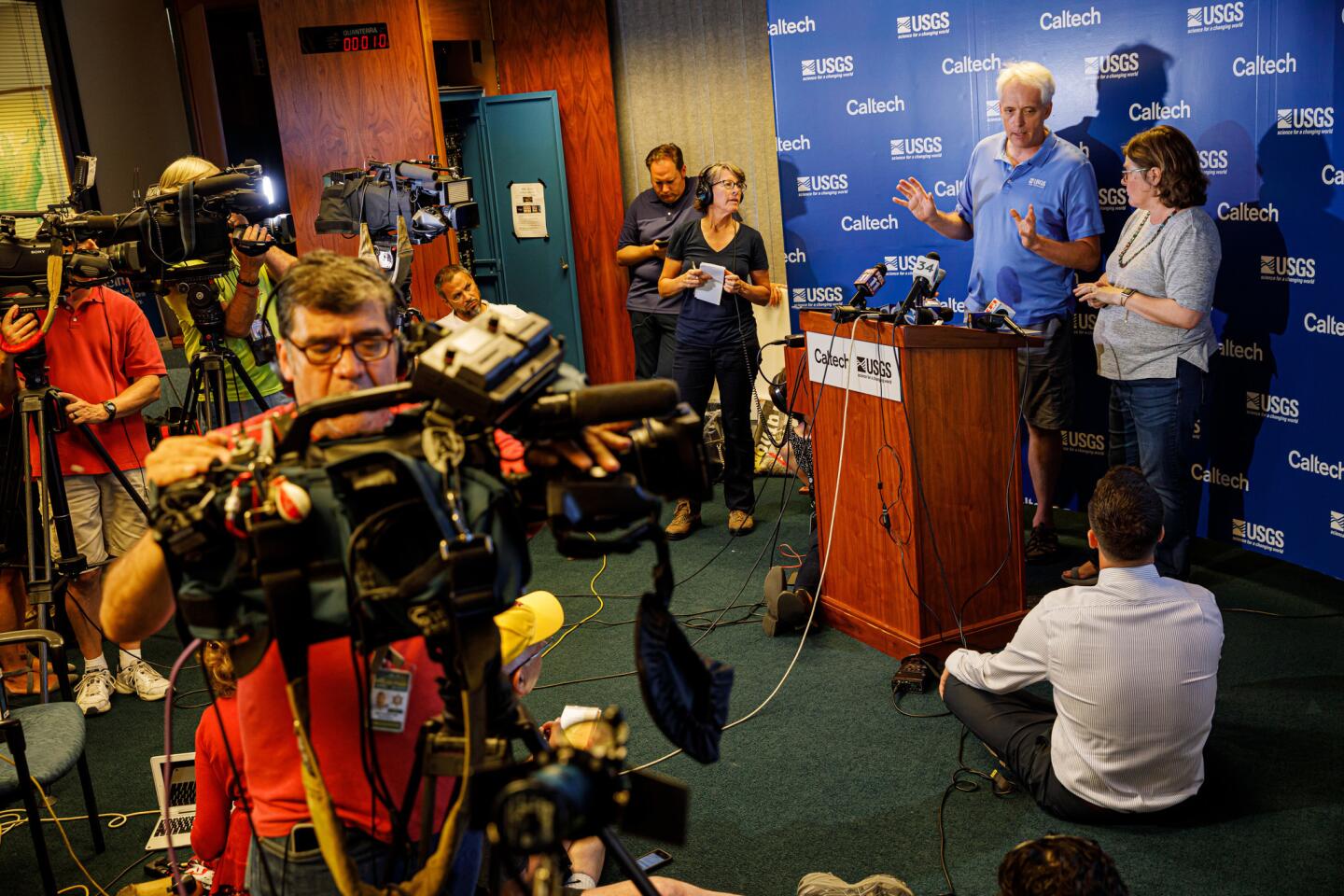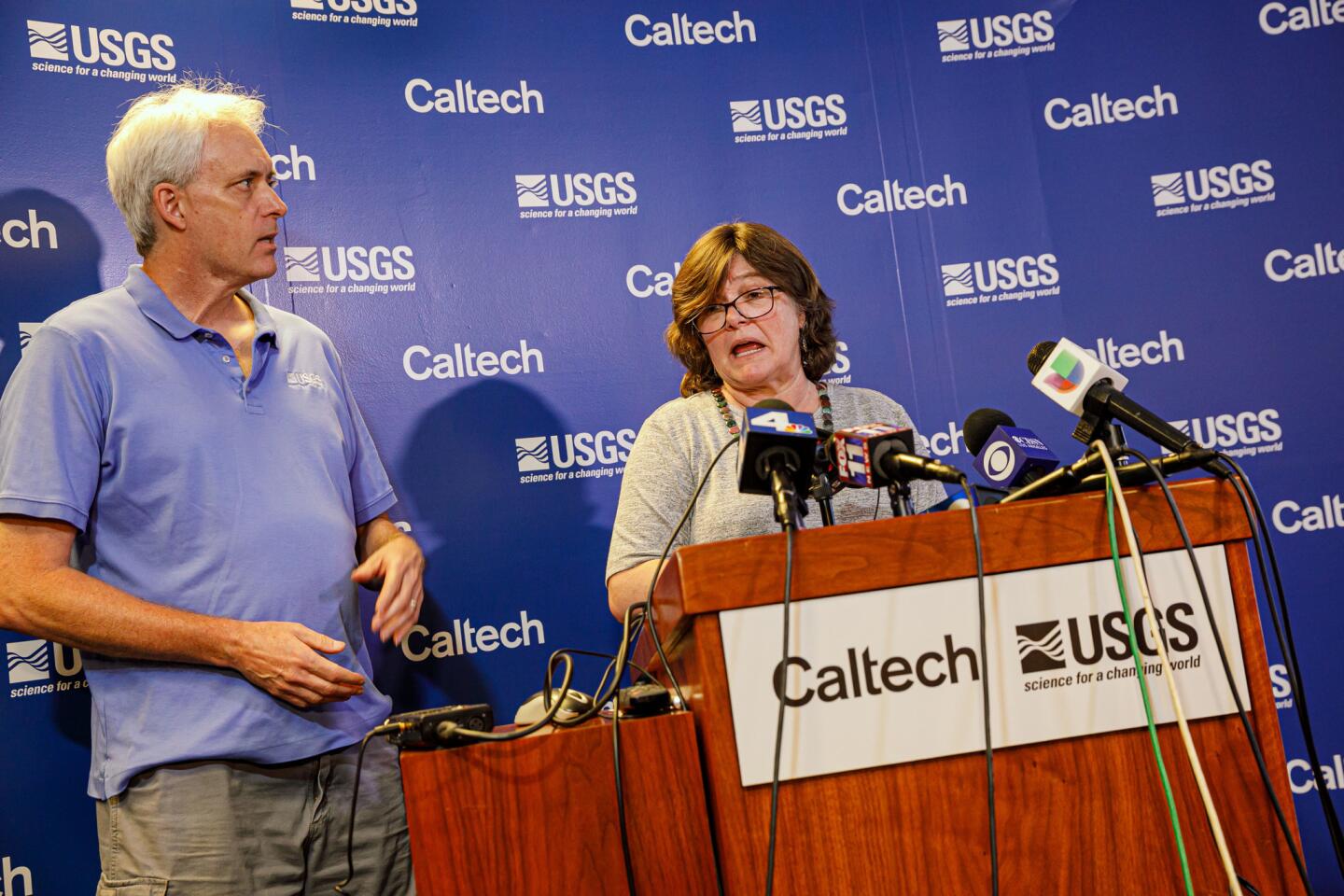Must Reads: 4th of July earthquake won’t delay the Big One. And it might have worsened quake strain
- Share via
Does a good-size earthquake help relieve pent-up seismic stress? Does that postpone the day of reckoning when the Big One finally arrives?
That was the question some in California were asking hopefully in the wake of the July 4 magnitude 6.4 earthquake that rattled the region.
The answers, like so many when it comes to seismology, are unsettling.
It’s wishful thinking to imagine that, as a rule, earthquakes “relieve” seismic stress, said seismologist Lucy Jones.
In fact, generally speaking, earthquakes actually increase the risk of future quakes.
The reality is coming into focus as Southern California experienced its largest earthquake in nearly two decades, ending a quiet period in the state’s seismic history.
Does an earthquake immediately relieve seismic stress, forestalling a future big quake?
No.
Think about what generally happens after a decent earthquake. Aftershocks. Lots and lots of aftershocks. It’s going on right now in the area around the Fourth of July magnitude 6.4 earthquake in the Mojave Desert, close to Ridgecrest, a town of 29,000 notable for being a pit stop for Mammoth-bound skiers from L.A.
FULL COVERAGE: 6.4 July 4 Southern California earthquake »
But couldn’t relieving seismic stress in one part of the state restart the earthquake clock elsewhere?
No.
One part of California, west of the San Andreas, is constantly moving northwest, toward Alaska, relative to the other side of the Golden State, which is headed toward Mexico.
These immense forces are what generated the state’s mountains, from the ranges seen in the Los Angeles Basin to the hills lining the ridges of the Bay Area. There’s a reason why earthquake faults are often alongside hills and mountains.
“If you see mountains in California, that means something is moving up those mountains faster than erosion is wearing them down,” Jones said in an interview published last year. “Basically, when you see mountains, think earthquakes in California.”
It’s also the reason why California has been home to lucrative deposits of oil. It’s the reason where there are springs in the desert giving rise to places like Palm Springs.
There is no avoiding, eventually, big earthquakes being unleashed on faults somewhere in this state. We just don’t know exactly when or where it’ll happen. But just as it’s happened before in centuries and millennia past, it will happen again.
Why there are quakes in California?
Think about the San Andreas fault. It’s a huge fault — more than 800 miles long. Just the southern San Andreas fault, between Monterey County to close to the Mexican border, is capable of producing a magnitude 8.2 quake.
Relatively speaking, places on the southwest side of the San Andreas fault — such as Los Angeles, San Diego and Santa Barbara — are inching toward Alaska. Places on the other side of the San Andreas, such as Sacramento and the Mojave Desert, are sliding toward Mexico.
But in places along faults such as the San Andreas, the land on both sides of the fault are locked, even as land farther away continues to move. Eventually, the San Andreas — as well as other faults throughout California — will have to rupture to relieve mounting tectonic strain.
“Plate tectonics hasn’t suddenly stopped; it is still pushing Los Angeles toward San Francisco at the same rate your fingernails grow — about 1.5 inches each year…. Their motion cannot be stopped any more than we could turn off the sun,” Jones wrote in her recent book, “The Big Ones: How Natural Disasters Have Shaped Us (and What We Can Do About Them).”
The San Andreas is particularly feared because, in some sections, it will move for many feet almost instantaneously. A famous example was during the great 1906 magnitude 7.8 earthquake that destroyed San Francisco; at Point Reyes in Marin County, a fence that intersected the fault was suddenly cut in two, separated on each side by the San Andreas by 18 feet.
A similar sized earthquake of the San Andreas fault rupturing through the Palm Springs area would shatter the ground. If a couple had the misfortune of holding hands across the fault in a remote part of the desert near Desert Hot Springs when the Big One hits, they’d suddenly be separated by as much as 30 feet — almost the entire length of a city bus, U.S. Geological Survey research geophysicist Kate Scharer said in 2017.
RELATED: Here’s what you can do to be prepared for an earthquake »
What about just the area that was hit by the Independence Day quake? Is that area now relieved of quake strain?
It actually probably made things worse for parts of some faults in that region, said earthquake scientists Ross Stein and Volkan Sevilgen, writing on their blog at Temblor.net.
Parts of several other faults — in remote areas of California — were actually “brought closer to failure by the 4th July quake,” they wrote.
Some areas hit by Thursday’s quake likely became loaded with more seismic strain after two previous temblors — the 1872 magnitude 7.6 Owens Valley and the 1992 magnitude 7.2 Landers earthquakes.
In an interview Friday, Stein said it looks pretty clear that the Garlock fault and the northern part of the Blackwater fault were stressed from the Independence Day quake. The Garlock fault is probably the more worrisome of the two — at a length of 175 miles, it’s mathematically capable of an earthquake with a magnitude in the high 7s.
Fortunately for the most populous areas of California, the Garlock fault is in a remote location — along the northern boundary of the Mojave Desert, reducing the potential impact of a major quake on it, Stein said. There are also questions as to whether the Garlock fault is a zombie fault that could be dead.
RELATED: Near earthquake epicenter in Trona, ‘It looks like a tornado went through’ »
What does an era of earthquakes look like?
Sometimes, a moderate quake — after its series of aftershocks — can lead to a period of seismic quiet. Other times, it can usher in a new era of temblors.
For instance, in the 75 years before the great 1906 earthquake that destroyed much of San Francisco in shaking and flames, there were 14 earthquakes of magnitude 6 or greater in the Bay Area, Stein has previously said in an interview. (Since the 1906 quake — a magnitude 7.8 — there have been only three.)
Angelenos might remember what is now known as the earthquake storm of the 1980s and ’90s. As tallied by Caltech seismologist Egill Hauksson, it began with the Whittier Narrows temblor in 1987 (magnitude 5.9), which killed eight, followed by Pasadena in 1988 (4.9); Montebello in 1989 (4.4); Upland in 1990 (5.2); Sierra Madre in 1991 (5.8), which killed a woman; and ended with Northridge in 1994, which killed at least 57 people.
The 1800s were also an active time for earthquakes in California.
In 1800, a magnitude 7.2 quake hit on the San Jacinto fault east of Temecula. Then, in 1812, the San Andreas and San Jacinto faults moved in a magnitude 7.5 earthquake through present-day cities such as San Bernardino, Rialto, Loma Linda, Yucaipa and Highland and brought down Mission San Juan Capistrano’s Great Stone Church, killing more than 40 people inside.
Then, in 1857, the southern San Andreas sent extreme shaking on both sides of the fault all the way from Monterey County to Los Angeles and San Bernardino counties in a breathtaking magnitude 7.8 quake.
What’s an example of a moderate quake actually coming before something far worse?
On March 9, 2011, a magnitude 7.3 earthquake off the east coast of Japan led some people to be complacent when, two days later, a historic magnitude 9 earthquake struck. Some people ignored protocol and failed to immediately evacuate before the catastrophic tsunami hit.
Closer to home, the main shock of the last truly great earthquake in Southern California — at 8:24 a.m. on Jan. 9, 1857 — was preceded an hour earlier in the Monterey County area by a magnitude 5.6 earthquake, and a magnitude 6.1 earthquake an hour before that.
What can we do to prepare?
In general:
- If you’re an owner of an older home or building, retrofit it if it needs it, and if you rent, ask the landlord about it.
- Stock up on food, water and medicine to be self-sufficient for two weeks.
- Plan for your workplace to have a continuity plan. The Los Angeles County Economic Development Corporation has a template on how to do it at https://laedc.org/eq/
- And keep an eagle eye wherever you live or work, and imagine all the possible things that could fall on yourself, your loved ones and pets. Head to your hardware store’s earthquake prep section to find ways to bolt bookcases down and keep large objects from falling on you when the shaking comes.
We have a comprehensive list of tips available in our article, “Get ready for a major quake. What to do before — and during — a big one,” at https://lat.ms/2NB5SSq.
More to Read
Sign up for Essential California
The most important California stories and recommendations in your inbox every morning.
You may occasionally receive promotional content from the Los Angeles Times.
